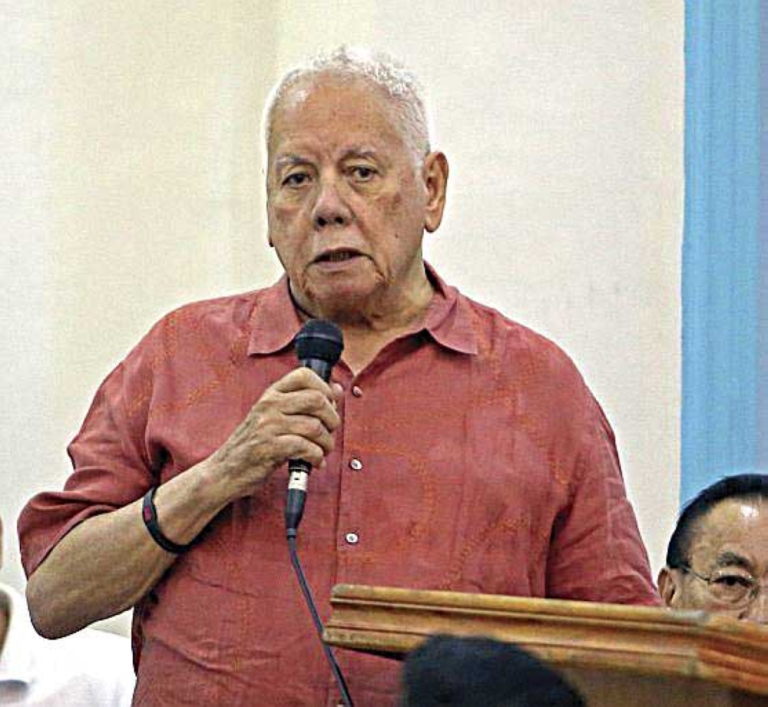Public officials miss media when they trumpet success. They’re glad reporters are not around when scandal breaks.
Covering local governments

Toledo City Mayor John Henry Osmeña.
Public officials miss media when they trumpet success. They’re glad reporters are not around when scandal breaks.
PACHICO A. SEARES
February 9, 2019
While some mayors lament media “under-coverage” of towns and cities in far-flung areas, which afflicts even urban centers in Metro Cebu that are outside Cebu City, public officials and media managers are not without measures to cope with the situation. Technology and the various media platforms provide wider access for government publicists. And news chiefs just have to be more adept at meeting audience demand with reduced resources.
WHEN Toledo City Mayor John “Sonny” Osmena sometime ago publicly complained that Cebu media was not covering his city, he was in the midst of trotting off accomplishments since he assumed as mayor.
Sonny ran for city mayor in 2013 and was reelected in 2016. He griped about media “under-coverage” of Toledo as he announced a string of successes in his governance. “You come to Toledo only when there is a disaster or a big crime,” he whined.
True enough, as also expressed by other mayors interviewed by CJJ.
But would these mayors want media coverage if the object of interest were a scandal brought about by official bungling or corruption? Would they not appreciate the lack or absence of media scrutiny then?
Public officials’ trait
It has been a common trait of politicians, or of most public officials, who rely on public trust to keep their job. Trumpet achievements. Hide or obscure failure.
When they have triumphs to tell, they want media to record and publish them. An embarrassing event or issue, however, sends them scampering for cover and, boy, are they glad that in Toledo – or the towns of Argao, Sta. Fe or Alcantara – there is no reporter to pester them with questions.
One news manager tossed back “lack of access” to the mayors who complained. They deny access to media usually when the glare of publicity spotlights a wrongdoing, proven or alleged.
Facts to consider
Whatever the true motive of mayors bewailing the non-presence of media in areas beyond Metro Cebu, here first are some facts.
RESOURCES. Cebu’s mainstream media have limited resources: reporters, vehicles, funds. Understandably, editors are careful in choosing incidents or issues to cover. They deploy reporters at beats most likely to produce the most interesting or significant story. Reporters fielded to faraway places means they won’t be available when an “oh-my-God” story breaks. This was true before and is even more compelling now: economics always dictate editorial decisions, whatever the newsroom size.
CRISIS IN PRINT. The economic crisis affecting print has further stretched and strained capability to cover. Far-flung towns and cities complain of under-coverage? Even the Metro cities outside Cebu City are not adequately covered, or have not been covered as intensively as before. Many beats, such as the justice beat and regional offices of national agencies, no longer have regular reporters; a reporter is sent out to a beat only when a big story breaks there. The “multi-tasks” that reporters must now do are prompting assignment editors to be even more picky.
WHAT AUDIENCE WANTS. Shifting interests of audiences have devalued further newsworthiness of most stories in towns and cities. More than ever, news managers use the old rule-of-thumb: if it’s not interesting or significant, it’s not news. A farm-to-market road, a drainage project, a bridge repaired, or some other “success” story in the community: interesting to people in the town or city concerned but not to the media outlet’s audience. What the griping mayors forget is that news chiefs always think of
(1) what their audience wants and
(2) what their audience needs: usually more of the former than the latter.
The situation does not mean nothing can be done on both sides: by news sources and by news managers.
Media managers may need to know what information, from which area, their news outlet’s audience consumes. Just as public officials, through their PIOs, may need to know the media platforms their constituents use. Public persons may just be pining for media not accessed by their voters.

Learning to cope
Dynamic public officials have already resorted to extensive use of the internet: by blogs, a web sites and active presence in social media. Creative moves by LGUs include establishing links with mainstream print and broadcast media through their news and features desks and sending advisories on interesting incidents and subjects, at times providing press release material to them so they won’t have to send a news crew. The Sta. Fe mayor must understand a news manager’s almost exasperating comment, “They don’t expect us to send reporters to the island town to cover a ribbon-cutting!”
In sum: use other news platforms, know what and how to contribute news or information to them. If they do that, they don’t have to ask them “to come down and get the material yourself.” Technology has rendered wasteful some aspects of news gathering. A mayor needs only one publicist who knows how things work.
An example of “initiative” is in Toledo City where Mayor Sonny Osmena set up a community radio station. It served his political purpose; the downside for voters is that they get only the information Sonny wants to be disclosed.
‘Rationalizing’ content
News managers, on the other hand, need to rationalize content with audience demand. Which in turn depends, nowadays, on the news outlet’s strategy for survival and growth.
That may be complex and tough for legacy media that operates on both print and digital terrain. What material to use in one and not the other? What may be modified if the same material is used in both?
The “rationalization,” which may need an occasional review by strategists, will help the news chiefs in deciding what not to use altogether. Eventually, LGU officials, through their PIOs will get it too.
Picking right media
Public officials, through their PIOs, will be pragmatic in studying which media to tap to reach their constituents. The media they want to get published in may just serve their ego, not the need of their residents to be informed.
That way, both sides won’t be wasting their energy and time. 
